Federation Treasures
Several works belonging to the Mariemont collections are classified as Treasures by the Wallonia-Brussels Federation
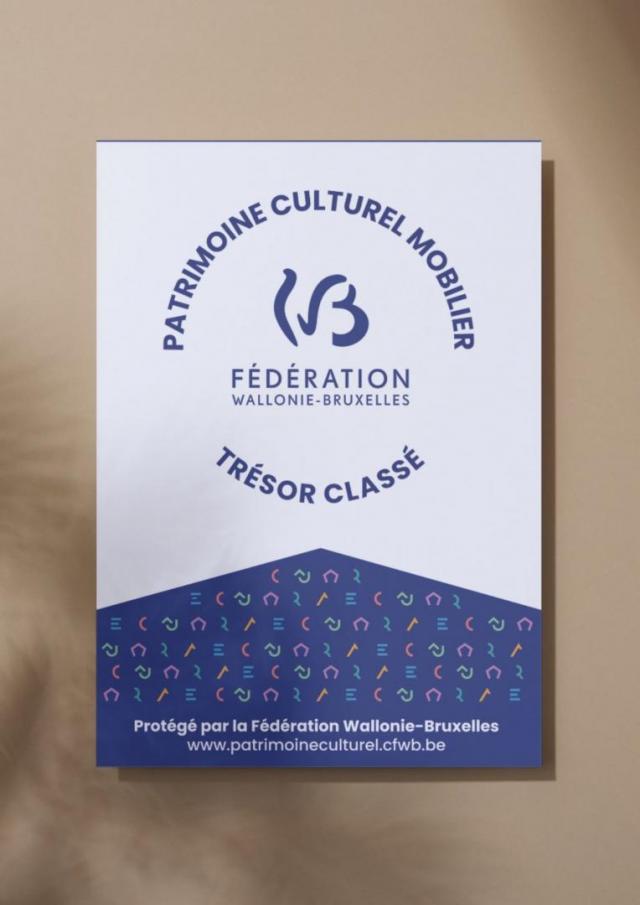
Our classified works
The Wallonia-Brussels Federation classifies as “Treasures” items of movable cultural heritage with artistic, historic or archaeological value. The classification is based on aesthetic appeal, rarity and links with history.
Today, 12 works or collections belonging to the Mariemont collections have received this important recognition.
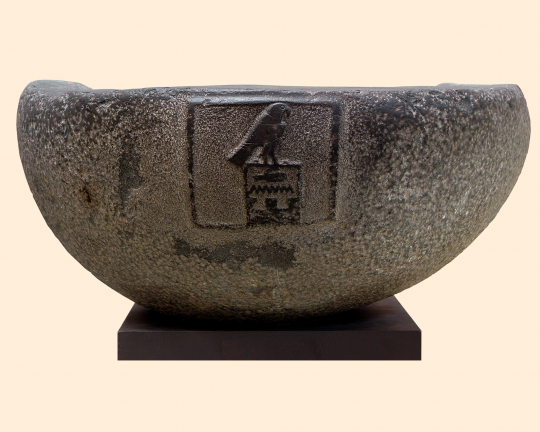
Ritual basin of King Den (formerly the Mortier du roi Den [Mortar of King Den])
- Grauwacke
- Egypt, Abydos, tomb of King Den
- Proto-Dynastic Period, 1st Dynasty (c. 2945–2904 BCE)
- Bequest Warocqué, 1917
- Classified in 2021
- Egyptian & near-eastern antiquities collection
This basin, which was used by priests to purify themselves before funeral rites, is one of the largest stone vessels known in Egyptian history. Discovered and associated with the tomb of King Den by Egyptologist Émile Amélineau in 1895–1896, it is an exceptional testimony of the period of the early kings of Egypt.
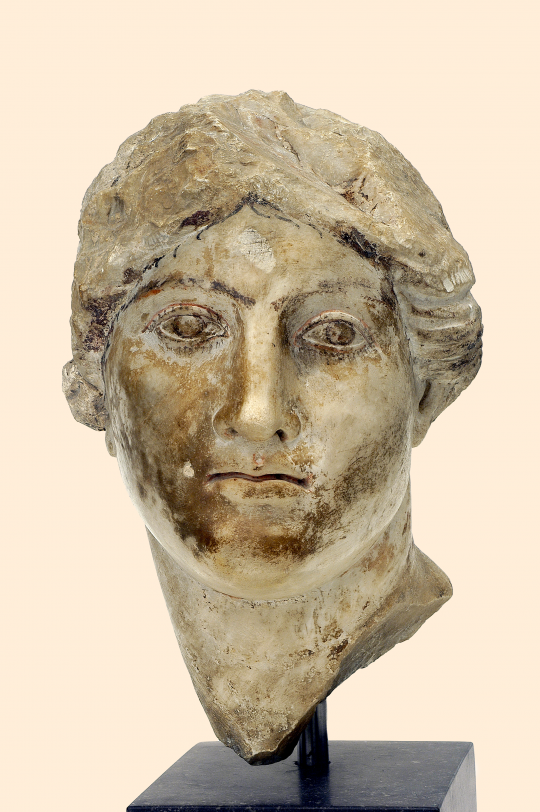
The bust of Queen Berenice II
- Polychromy marble
- Egypt, Hermopolis Magna
- Ptolemaic period, reign of Queen Berenice II (246–221 BCE)
- Bequest Warocqué, 1917
- Classified in 2023
- Greek & Roman Antiquities collection
Studies have revealed paint, beeswax varnish, gilding, as well as traces of scraping and repainting reflecting different stages in the portrait's treatment. This work is exceptional due to the state of preservation of its ancient polychromy.
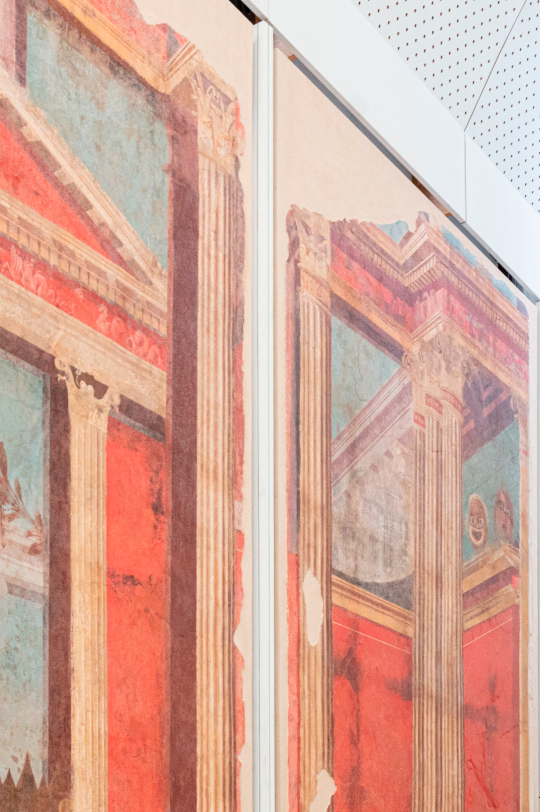
Eight fresco panels from the Boscoreale Villa
- Peinture sur enduit
- Italy, Boscoreale (near Pompeii), villa said to belong to Publius Fannius Synistor
- Mid-1st century BC
- Bequest Warocqué, 1917
- Classified in 2020
- Greek & Roman Antiquities collection
The number and artistic quality of the frescoes, as well as their preservation, are exceptional. They are a valuable testimony of the pictorial art characteristic of the late Republican era. The frescoes ensemble at Mariemont is currently the largest collection of Pompeian frescoes preserved in Europe outside Italy.
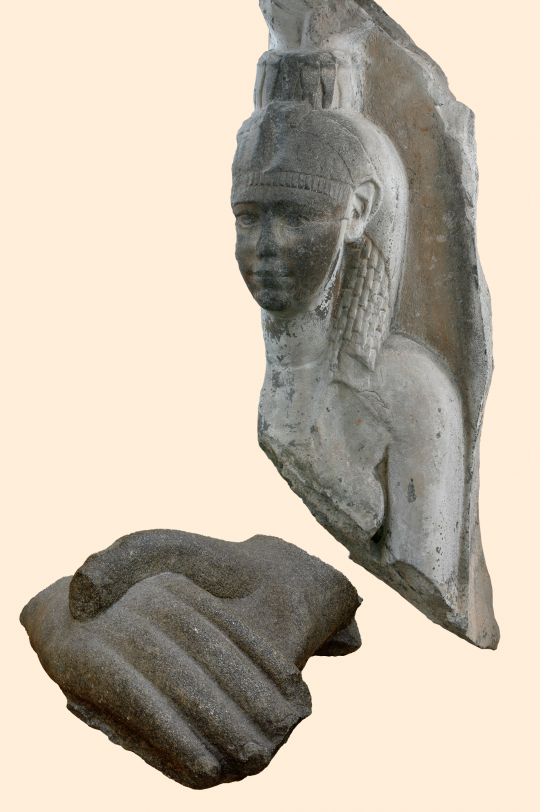
Two pieces of an Egyptian colossus
- Granite
- Egypt, Alexandria, Smouha
- Ptolemaic period (mid-1st century BC)
- Bequest Warocqué, 1917
- Classified in 2021
- Egyptian & near-eastern antiquities collection
Despite modern excavations carried out at the site where they were discovered, it is difficult to determine whether these fragments come from a single statue or several. The bust known as ‘Cleopatra’ and the two intertwined hands are the only colossal fragments of statuary from this period to be preserved outside Egypt.
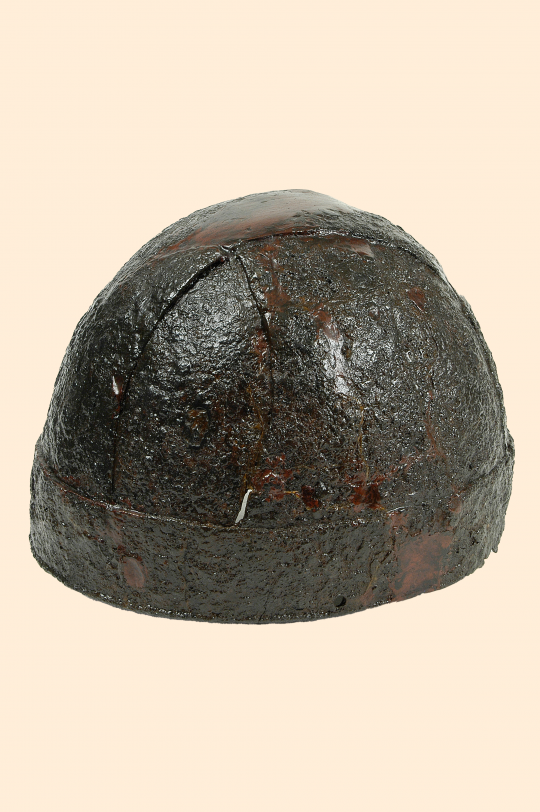
Helmet
- Iron plate
- Belgium, Trivières
- Merovingian period, late 5th-early 6th century
- Bequest Warocqué, 1917
- Classified in 2025
- Regional & Estate Archaeology collection
An extremely rare, almost complete example of a type of helmet known only from two other similar pieces, one from Germany and the other from Great Britain, the Trivières helmet bears witness to the exceptional nature of one of the richest Merovingian necropolises in Belgium.
Probably designed for a warrior of high status, the helmet was adjusted to fit his head shape, demonstrating exceptional skill in metalworking.
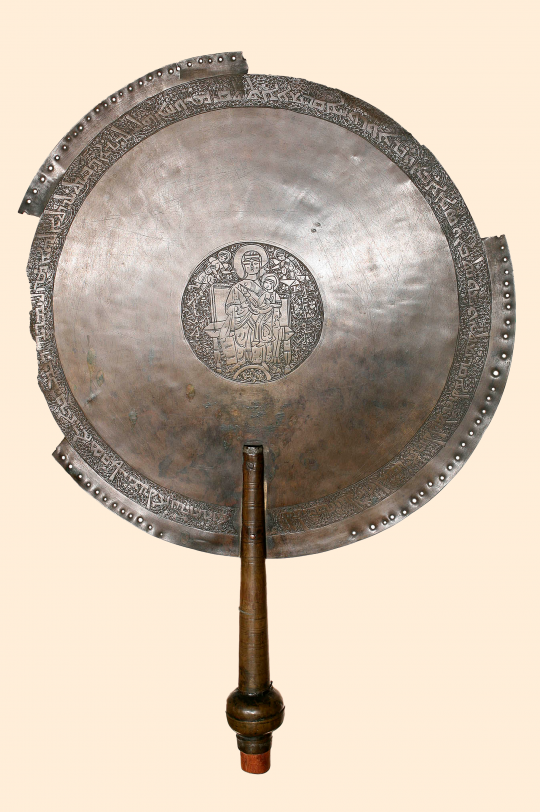
Flabellum
- Bronze
- Egypt, Ouadi Natroun, Deir el-Souriani, Church of the Holy Virgin
- Ayyoubide Period, 1202-1203
- Bequest Warocqué, 1917
- Classified in 2021
- Egyptian & near-eastern antiquities collection
This object originally formed a pair with another example kept at the Louvre Museum. They were used to fan the altar during Christian rituals in the Eastern Church. In addition to its fascinating history, this object features Christian decoration influenced by Islamic elements, reflecting the rich cultural exchanges of the period.
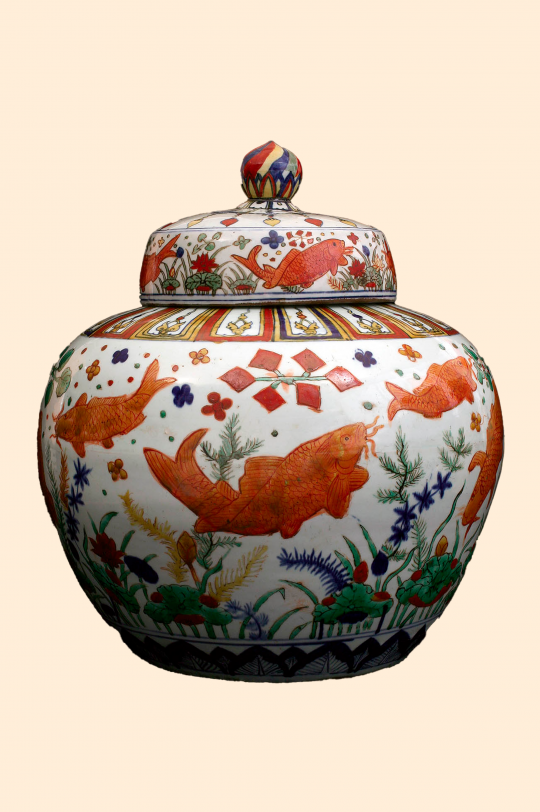
Wine jar with aquatic decoration
- Porcelain, ‘five-colour’ enamel decoration (wucai)
- Southern China, imperial workshops of Jingdezhen
- Ming dynasty, 16th century
- Bequest Warocqué, 1917
- Classified en 2023
- Non-european Arts collection
Intended for imperial court banquets, this jar – a true masterpiece from the imperial workshops – stands out for its decoration and size. It illustrates the major innovation of the period: the wucai (five-colour) decorative technique. This type of object is extremely rare in the West.
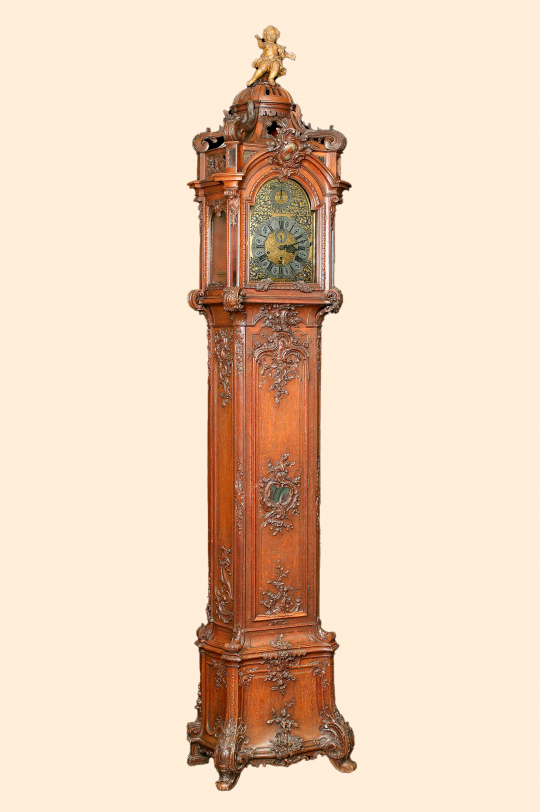
The clock case and mechanism of the grandfather clock
- Henri Rossius (clockmaker) and Louis Lejeune (carpenter and cabinet maker)
- Oak, metal
- Belgium, Liège
- 1743
- Bequest Warocqué, 1917
- Classified in 2011
- Decorative Arts collection
With its elegant shapes and refined decoration, this clock illustrates both a respect for classical tradition and a marked influence from the Rococo style. Its finely engraved interior ornamentation draws on the artistic repertoire of the Renaissance. It is one of the jewels of 18th-century Liège furniture.
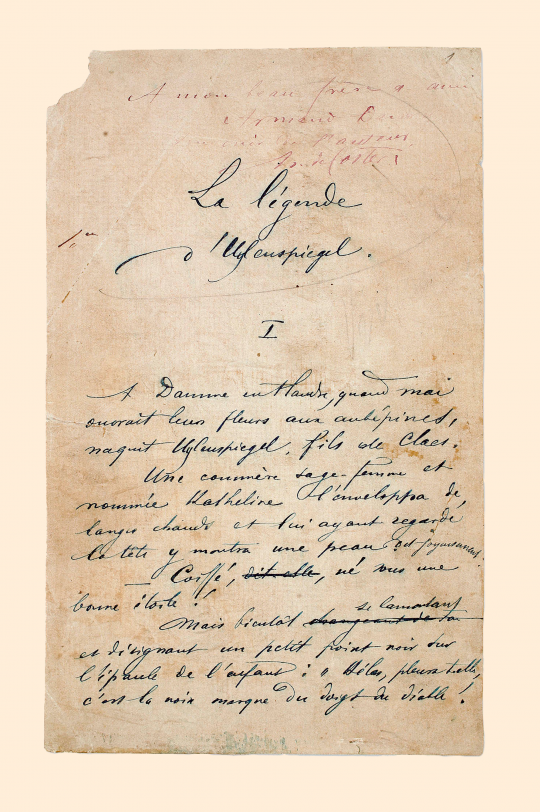
La légende d'Uylenspiegel [The Legend of Uylenspiegel]
- An autographed manuscript
- Charles De Coster
- 1867
- Bequest Warocqué, 1917
- Classified in 2023
- Rare book collection
It is considered the first masterpiece of Belgian literature and an essential classic, sometimes referred to as the ‘national Bible’ of the Belgians. Bound in four volumes, it brings together the first 302 pages of the original 1867-1868 edition. Beyond its autograph value, it bears witness to the author's various phases of writing and corrections, reinforcing its exceptional character.
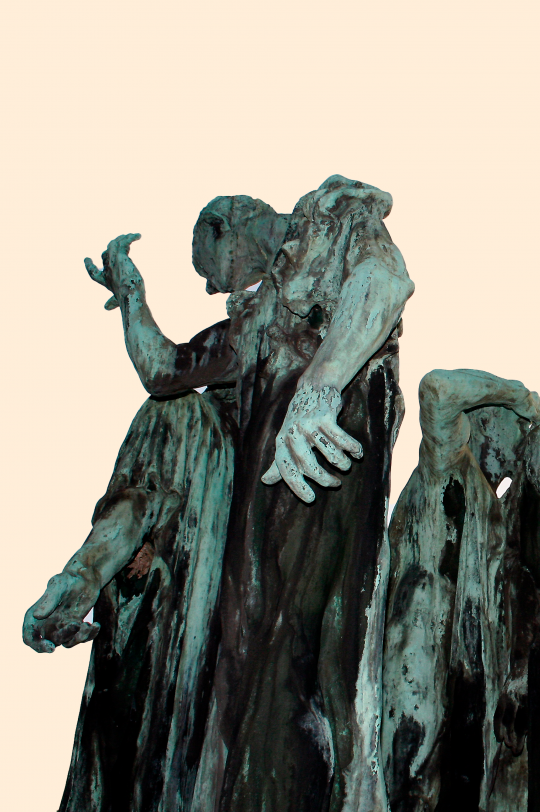
Les Bourgeois de Calais [The Burghers of Calais]
- Auguste Rodin
- Bronze sculpture
- 1905-1906
- Bequest Warocqué, 1917
- Classified in 2011
- Regional & Estate history collection
Undoubtedly one of Auguste Rodin's most famous works, this group is one of four created during the artist's lifetime. Commissioned in 1905 by Raoul Warocqué and delivered in 1906, it is richly documented thanks to correspondence preserved at the museum.
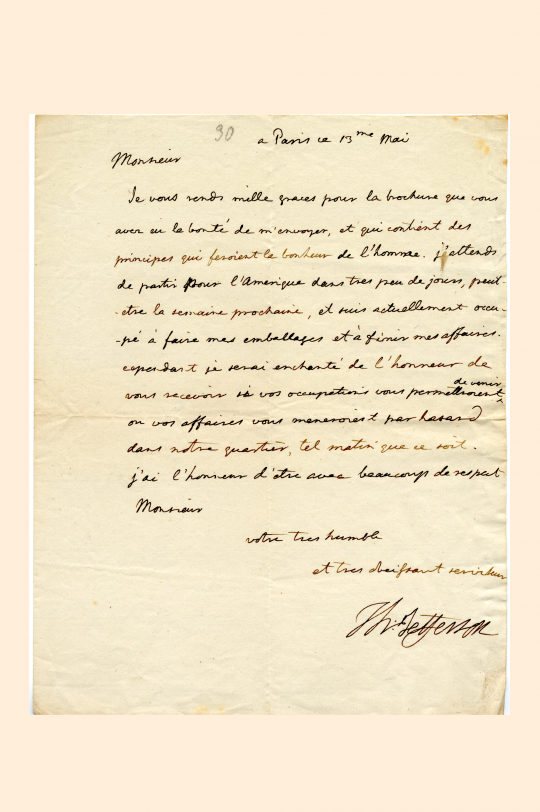
A group of autographs from the Warocqué collection
- Diverse authors
- 12th to 20th century
- Bequest Warocqué, 1917
- Classified in 2023
- Rare book collection
Raoul Warocqué's collection of 5,554 autographed documents, assembled in a universalist spirit, is distinguished by its coherence and uniqueness. This collection reflects the evolution of cultural, intellectual, scientific, political, artistic, diplomatic and religious trends from the Middle Ages to the early 20th century.
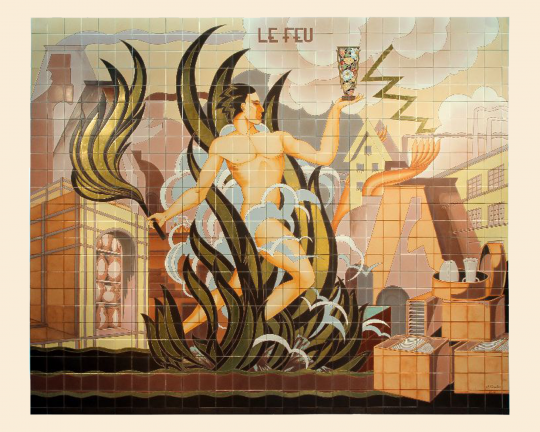
"Le Feu" (Fire)
- Raymond Henri Chevallier, manufacture Boch Frères Keramis
- Wall composition of 696 ceramics tiles
- 1948
- Acquisition in 2006
- Classified in 2025
- Decorative Arts collection
This ceramic composition is kept at the Keramis Museum in La Louvière, alongside the composition ‘La Terre’ (collection of the FWB). Designed by ceramist Raymond Henri Chevallier, the diptych originally adorned the entrance hall of the administrative building of the Boch Frères Keramis in La Louvière, which was inaugurated on 14 June 1948.


